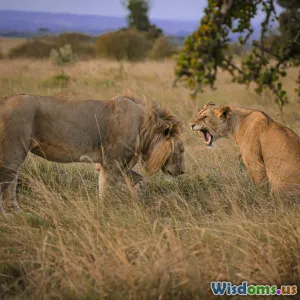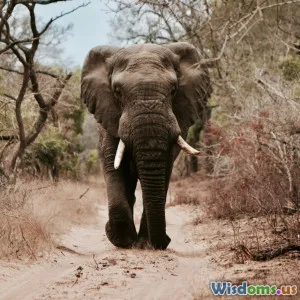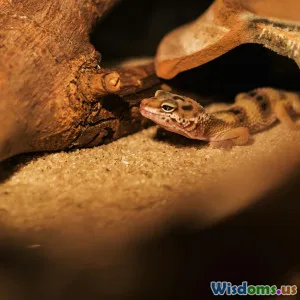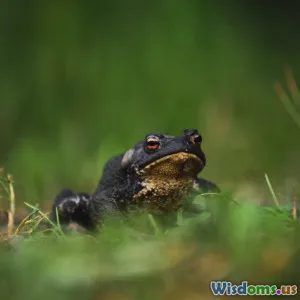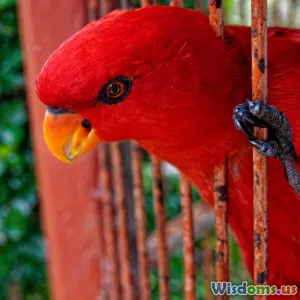
Should Zoos Be a Thing of the Past Examining Welfare and Conservation
9 min read Explore the ethical and conservation debates surrounding zoos and their future in wildlife care. (0 Reviews)
Should Zoos Be a Thing of the Past? Examining Welfare and Conservation
Introduction
From captivating childhood memories to controversial headlines, zoos have long been woven into the tapestry of human-animal interactions. Historically, zoos promised public entertainment and education, placing exotic creatures on display far from their natural habitats. But as our understanding of animal sentience and ecosystem complexity deepens, so too does the scrutiny of zoos’ ethical and ecological roles. Should zoos be relegated to history, or can they transform into crucial allies for wildlife conservation and animal welfare?
This article dives into the multifaceted debate, dissecting the claims, evidence, and evolving missions of zoos worldwide to provide a nuanced perspective on their place in modern society.
The Historical Context and Purpose of Zoos
Entertainment Versus Education
Zoos date back to ancient civilizations, where rulers showcased animals to symbolize power. Modern zoos first emerged in the 19th century with growing public interest in natural history. Traditionally, their primary focus was exhibition—animals housed primarily for human enjoyment.
However, over time, many zoos shifted their rhetoric toward education, aiming to foster awareness about wildlife and inspire conservation efforts. The San Diego Zoo, for example, has evolved into a research and conservation authority, supporting species recovery programs globally.
Breeding Grounds for Conservation or Captivity?
Modern zoos often participate in captive breeding initiatives to prevent extinction of endangered species. The Arabian oryx's reintroduction into natural habitats after disappearing from the wild illustrates captive breeding’s potential. Yet, critics question if captivity can truly compensate for shrinking habitats, emphasizing that breeding programs should never be a substitute for habitat preservation.
Animal Welfare Concerns in Zoos
Physical and Psychological Well-being
One of the most pressing criticisms concerns the welfare of animals confined in captive environments. Unlike the sprawling ecosystems they originate from, many zoo enclosures are significantly smaller and less complex. Species like elephants and big cats often show signs of stress or abnormal behaviors—stereotypies such as pacing or self-harm—which experts link to inadequate stimulation or space.
Take the case of Asian elephants: natural herd structures are tight-knit and matrilineal, but many zoos often house these social mammals in smaller groups or alone, negatively impacting their social and psychological health. Similarly, research published in "Applied Animal Behaviour Science" (2017) found that captive carnivores often exhibit increased aggression and reduced longevity compared to their wild counterparts.
Improvement Efforts and Welfare Standards
Not all zoos fall short on welfare. Facilities accredited by organizations such as the Association of Zoos and Aquariums (AZA) must meet rigorous standards covering enrichment, veterinary care, and habitat quality. The Singapore Zoo, for instance, is praised for creating open, naturalistic habitats with ample enrichment, improving animal happiness and visitor education.
Furthermore, technological innovations like virtual reality and behavioral research tools are being integrated to better understand and improve captive animal welfare.
The Conservation Debate: Are Zoos Making a Difference?
Conservation Successes
Zoos have contributed meaningfully to some species’ survival. The California Condor’s population thrived from fewer than 30 individuals in the 1980s to over 400 today due to captive breeding and release programs led by zoos and wildlife agencies.
Similarly, the Amur leopard, critically endangered with wild populations under 100, benefits from international breeding collaborations across zoos, creating genetic reservoirs.
Limitations and Criticisms
Despite these successes, many scientists argue that zoos address symptoms rather than causes. Habitat destruction, poaching, and climate change pose threats zoos cannot fix. The International Union for Conservation of Nature (IUCN) advocates for in situ (on site) conservation over ex situ (off site) approaches when possible.
Furthermore, some critics note that only a tiny fraction of thousands of species held in zoos are endangered or involved in breeding/release programs. Many animals exist solely for public display, raising ethical questions.
The Role of Education in Conservation
Zoos serve as accessible education hubs, inspiring millions to care about wildlife. Studies published in "Conservation Biology" suggest that engaging with live animals creates emotional connections, increasing public support for conservation policies.
However, education efficacy depends on quality programming. Passive viewing without informative content tends to reinforce misconceptions that wildlife can be kept contained behind bars.
The Future of Zoos: Reinvention and Alternatives
Toward Sanctuaries and Rescue Centers
An emerging consensus favors the transformation of traditional zoos into sanctuaries focused on rescue and rehabilitation rather than exhibition. Institutions like the Elephant Nature Park in Thailand prioritize animal welfare and habitat simulation while refusing to breed or sell animals.
Such centers promote ethical treatment without glorifying captivity.
Advances in Technology: Virtual Zoos and Remote Learning
The rise of digital technologies presents alternatives to traditional zoos. Virtual reality experiences, live streaming from wild habitats, and wildlife documentaries allow immersive encounters without confining animals. Projects like Explore.org’s live nature cams engage global audiences daily.
Strengthening Habitat Conservation and Ecotourism
Redirecting funds from captive animal maintenance toward habitat preservation may yield more impactful outcomes. Ecotourism initiatives that support local communities while conserving ecosystems have demonstrated sustainable models—like Costa Rica’s protected rainforest reserves attracting tourists and funding conservation.
Conclusion
Zoos today stand at a crossroads between tradition and transformation. While they have played roles in conservation and education, persistent welfare concerns and breeding program limitations warrant critical reflection. The future likely lies in hybrid models — centers combining sanctuary principles with scientific research, cutting-edge public education, and strong ties to in situ conservation efforts.
To ensure zoos are not relics of an outdated ethos, society must demand transparency, elevate animal welfare standards, and rethink conservation priorities. By doing so, we may honor our responsibility to wildlife, fostering empathy and action toward a sustainable coexistence rather than captivity.
References:
- Melfi, V. A. (2017). "Animal welfare and wildlife conservation in zoos." Applied Animal Behaviour Science.
- IUCN Position Statements on Ex Situ Conservation, 2020.
- AZA Accreditation Standards, Association of Zoos and Aquariums, 2023.
- Conde, D. A. et al. (2011). "Improving reintroduction planning in a changing world." Trends in Ecology & Evolution.
- Explore.org wildlife camera archives.
By bridging welfare with conservation goals, the zoos we envision could inspire understanding and preserve the wild spirit within human reach.
Rate the Post
User Reviews
Popular Posts










